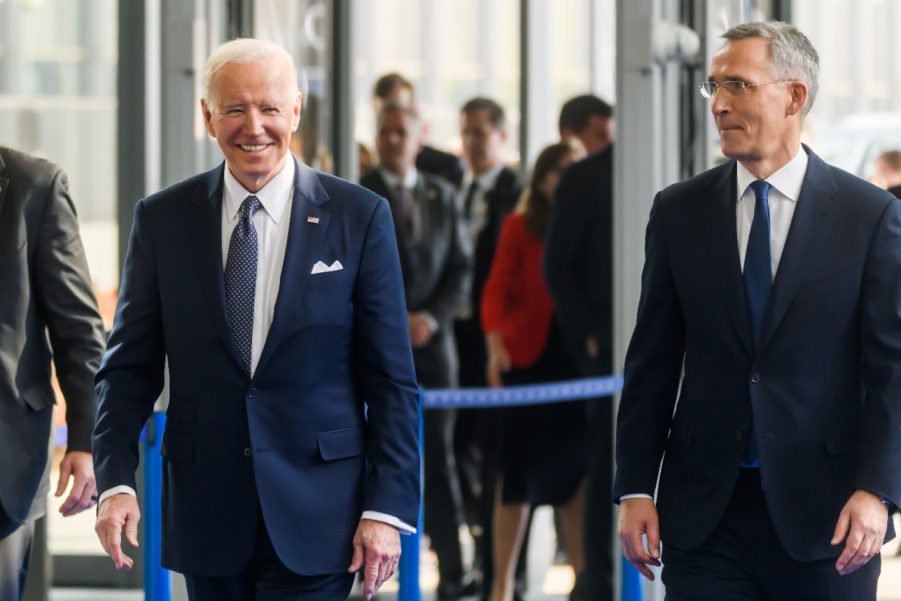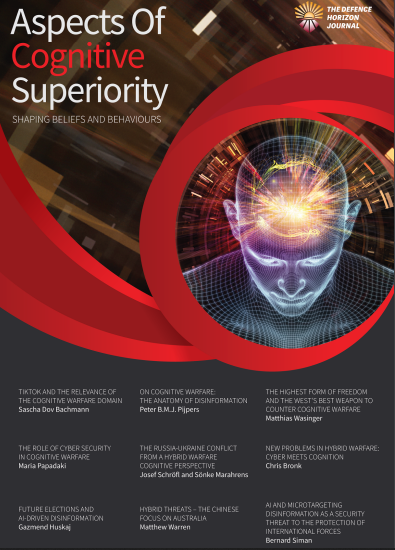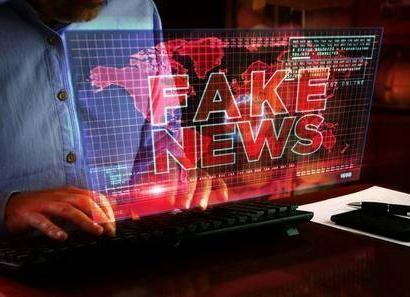Abstract: Americans still view the North Atlantic Treaty Organization as a critical alliance to achieving U.S. national security interests long after the collapse of the Soviet Union and the end of the Cold War. Not only does American support for NATO have considerable implications for the U.S. role in the alliance, but that support also shapes alliance credibility and support for Ukraine. Americans also favor maintaining a sizable U.S. military presence in Europe and are troubled by the emerging China-Russia partnership. However, an emerging partisan divide is shaping how Americans perceive both NATO and U.S. security assistance to Ukraine. Also, the U.S. rebalance towards the Indo-Pacific to contain China will have direct implications for America’s role in NATO.
Problem statement: Why do Americans continue to support NATO more than thirty years after the collapse of the Cold War?
So what?: NATO member states, especially the U.S., must be prepared to promote the alliance’s credibility and maintain transatlantic unity. In the past, NATO adapted to shifting and changing threats. However, China and America’s rebalance to the Indo-Pacific, competition over advanced technologies, and the war in Ukraine could undermine credibility. NATO unity largely rests on the extent to which the American public continues to express favorable views of the alliance in serving U.S. national security interests.

Source: shutterstock.com/Gints Ivuskans
NATO’s Cold War Identity
Although the Cold War ended more than three decades ago, Americans continue to express support for the North Atlantic Treaty Organization (NATO). Despite sharp partisan differences in some cases, Democrats and Republicans hold generally positive perceptions of NATO. Why do Americans still support a Cold War-era alliance long after the collapse of the Soviet Union? The answer lies in the complexities of American opinion toward NATO and alliance credibility.
NATO was formed in the Washington Treaty of 1949 to contain the spread of Soviet influence across Europe. One year before the treaty was ratified by its twelve founding members, Gallup reported that 65% of the American public supported the position that “the United States and all the Western European countries participating in the Marshall Plan should join together in a permanent military alliance.”[1] A bipartisan consensus formed with 68% of Democrats and 66% of Republicans backing American membership in NATO.[2] From its inception, NATO was seen by most Americans as an alliance mechanism that would balance against Soviet expansionism.
From its inception, NATO was seen by most Americans as an alliance mechanism that would balance against Soviet expansionism.
Throughout the Cold War, NATO enjoyed the support of most Americans. In 1974, 54% of Americans supported increasing or maintaining America’s commitment to NATO, with 60% of Republicans, 57% of Democrats, and 51% of independents favoring that position.[3] American support for NATO increased to 71% in 1986, with 83% of Republicans, 71% of independents, and 65% of Democrats expressing favorable views of the alliance and the Reagan Administration’s confrontational foreign policy strategy.[4]
Struggle for Legitimacy: From the End of the Cold War to America First
At the same time the Soviet Union was collapsing, American public support for NATO also declined. In June 1991, 62% of Americans believed the alliance should be maintained, compared to 75% in July 1989.[5] Americans were questioning the legitimacy and purpose of NATO because the Soviet Union was coming to an end.
However, NATO became instrumental in ending the violent conflicts in Bosnia and Herzegovina and Kosovo. Consequently, American public support for the alliance returned to Cold War levels. When NATO was considering airstrikes against Bosnian Serb targets, American public support for NATO increased from its low point in 1991 to 70% in 1994.[6]
Nevertheless, there were some important caveats for Americans. Driven largely by the failed humanitarian mission in Somalia, American support declined when ground troops were considered. Between 1993 and 1995, public approval for using American troops in an international mission ranged between 33% and 46%, with just 30% believing the U.S. had a moral obligation in Bosnia and only 40% thinking Bosnia was important to American security interests.[7] However, in the years since the Dayton Accords, U.S. public opinion shifted in favor of maintaining an American presence in Bosnia and Herzegovina, with 64% in June 2002 approving U.S. peacekeeping troops there.[8]
Similar patterns were observed in Kosovo. When airstrikes against Serb military positions began, most Americans were either reluctant about or not simply paying attention to U.S. participation in the NATO air campaign against Serb forces.[9] While American public support for the airstrikes stood at 62% in both March and April,[10] 65% were worried about American casualties, with 63% of Americans worried that U.S. ground troops would be deployed for an extended period.[11] However, American public support grew maintained because Operation Allied Force resulted in no American casualties, and U.S. ground troops were only introduced after Serb forces withdrew from their positions. A June 1999 poll found 68% of Americans believed the U.S. and NATO made the right decision to intervene in Kosovo, which boosted NATO’s credibility in helping prevent the outbreak of major conflicts in Europe.[12]
American public support grew maintained because Operation Allied Force resulted in no American casualties, and U.S. ground troops were only introduced after Serb forces withdrew from their positions.
Following the terrorist attacks of September 11th, NATO invoked Article 5 of its charter for the first time in its history and supported counterinsurgency operations in Afghanistan and elsewhere. NATO’s credibility was maintained until the American invasion of Iraq in 2003 split the alliance with Turkey refusing to open a northern invasion route. While NATO appeared to be united in March 2011 in enforcing an arms embargo and maintaining a no-fly zone in Libya, President Obama expressed his frustration with European NATO members over sharing the burden of the intervention: “Free riders aggravate me… We don’t have to always be the ones who are up front.”[13]
Also, partisan divisions emerged within the American public. While American support for increasing or maintaining U.S. security commitments to NATO increased 18 points from 1991 (62%) to 2017 (80%), the rise was driven by a surge among Democrats (59% to 97%) compared to flattening among Republicans (67% to 69%).[14] Partisan fault lines were now being drawn in the American electorate.
In 2016, candidate Donald Trump exposed these partisan divisions when he suggested that if he was elected president, the U.S. might not fulfill its NATO obligations.[15] With “America First”, Trump stated that U.S. defense commitments should be conditioned on whether NATO allies “fulfilled their obligations to us” even though that is not how NATO works.[16] As president, he pressured NATO allies to increase their military spending or risk the U.S. withdrawing troops from Europe or removing the U.S. from the alliance altogether.
Interestingly, Trump’s repeated attacks on NATO never resonated with most Americans. A 2019 poll showed that 78% of Americans still supported maintaining or increasing U.S. defense commitments to NATO.[17] Furthermore, while more Democrats supported NATO than Republicans, the gap was not any wider compared to previous years.[18]
Nevertheless, when specific questions were posed, partisanship intensified, and gaps between elites and the public emerged.[19] In 2019, Eurasia Group Foundation (EGF) reported that 66% of Democrats and most independents supported using military force to defend a NATO ally against a hypothetical Russian attack compared to most Republicans who opposed it.[20] Also, 95% of American policymakers supported using U.S. military force to honor its Article V commitments compared to just 54% of Americans.[21]
Russia’s Invasion of Ukraine
Russia’s invasion of Ukraine in February 2022 boosted American public support for NATO and enhanced alliance credibility, at least for the time being. The percentage of Americans holding favorable views of NATO increased from 60% in 2020 to 67% in 2022.[22] Russia’s invasion of Ukraine also appeared to smooth over transatlantic tensions that emerged during the evacuation in Afghanistan, which led to the return of the Taliban.
Furthermore, American support for NATO increased at the same time the percentage of Americans viewing Russia as an enemy increased to 70% in 2022.[23] This corresponded with 64% who believed that NATO serves U.S. national security interests.[24] Moreover, large majorities supported NATO’s admission of Finland and Sweden (76%), Ukraine (73%), and Georgia (67%).[25] Another poll showed 77% of Americans believed Finnish and Swedish membership in NATO would benefit the U.S. and alliance members.[26] NATO approved Finland’s membership application in April 2023.
Another variable driving Americans’ support for NATO is the level of education. Americans holding a bachelor’s or postgraduate degree are more likely to express favorable views of NATO than those who do not hold the same degree. Roughly 75% of Americans with a college or university degree support NATO in comparison to 56% who have a high school diploma or less.[27]
Americans holding a bachelor’s or postgraduate degree are more likely to express favorable views of NATO than those who do not hold the same degree.
Throughout 2022, American public support for Ukraine surged. One poll reported 55% of Americans support increasing U.S. troops in Europe, with 61% of Democrats and 54% of Republicans backing additional deployments.[28] Furthermore, 61% of Americans believed U.S. sanctions against Russia were worth the price of paying higher energy costs.[29] In May 2022, Pew reported that 55% of the American public was extremely worried and 28% were concerned about the implications of a Russian military victory.[30] Most Americans (55%) support Ukraine’s membership in NATO.[31] In December 2022, another poll reported that 65% supported additional U.S. lethal assistance and economic assistance to Ukraine and 73% supported Ukrainian refugees coming to the U.S.[32]
However, as the war dragged into 2023, Americans began showing more complex views regarding U.S. assistance to Ukraine. The percentage of Americans concerned about a Russian victory declined from 82% in March 2022 to 68% in February 2023.[33] This could be attributed to greater Western confidence in Ukraine’s capabilities as Ukraine began receiving American M1 Abrams, British Challenger 2, German Leopard tanks, field artillery pieces, armored fighting vehicles, and air defense artillery systems.[34]
While one poll showed 64% of Americans supported additional U.S. weapons shipments and 63% supported additional financial assistance to Ukraine, another showed the percentage number of Americans believing the U.S. is giving Ukraine too much military assistance increased from 7% in March 2022 to 26% in January 2023.[35] In addition, 43% of Republicans and 19% of Democrats believe U.S. assistance should be gradually withdrawn over the long term.[36] Furthermore, the percentage of Americans viewing Russia as an enemy fell from 70% in 2022 to 64% in 2023, as the percentage of Americans viewing China increased from 25% to 38%.[37]
Conclusions
Long after the end of the Cold War, most Americans still support NATO. Americans also hold very distinct views of the alliance, namely support for admitting new members, confidence in NATO serving American security interests, negative views of Russia, and support for security assistance to Ukraine. Most are also worried about the emerging China-Russia partnership, holding broadly negative views of both countries.[38]
However, important challenges remain. The Russian invasion of Ukraine has prioritized vulnerable Eastern members closer to the U.S. than Western European members.[39] While Russia’s war has increased anxieties about China, the U.S. rebalance towards the Indo-Pacific could expose divisions with NATO members that depend on trade and investment with China.[40] Also, divisions exist on both sides of the Atlantic over the development of microchips and advanced technologies.[41] Moreover, the U.S. prefers that NATO members more closely align with allies and partners in the Indo-Pacific region to balance against China in the intense competition over advanced technologies, cyber defense, and maritime security.[42] A recent report suggests that Canada is interested in joining the Australia-United Kingdom (AUKUS) defense pact to enhance its access to military technology and intelligence.[43] Consequently, if other NATO members follow Canada, NATO could evolve into a more globally-oriented alliance upholding a rules-based order the U.S. believes is being undermined by an emerging Russia-China partnership.
The U.S. prefers that NATO members more closely align with allies and partners in the Indo-Pacific region to balance against China in the intense competition over advanced technologies, cyber defense, and maritime security.
Worries over the spread of Soviet influence during the Cold War and Russian expansion today bookend American public support for NATO. If most Americans believe NATO is central to U.S. national security, then the U.S. role in the alliance will continue or even expand. However, if American public support for Ukraine diminishes, then alliance credibility will be undermined. Moreover, NATO’s united front against Russia could be undermined if Americans continue to view China as a threat and the alliance takes on a greater role in the Indo-Pacific.[44] NATO’s credibility rests on the extent to which the American public continues to express favorable views of the alliance in serving U.S. national security interests on both Russia and China. Furthermore, should former President Trump win in 2024, NATO’s very existence will be at risk.
Chris J. Dolan is Professor of Intelligence and Security Studies and Director of the Institute of Threat Intelligence and Cyber Defense at Lebanon Valley College in Pennsylvania. He is a two-time Fulbright U.S. Scholar (North Macedonia, 2022; Kosovo, 2019-2020), where he taught courses and conducted research on NATO crisis management operations, hybrid warfare, and disinformation. Dolan is the author of The Politics of U.S. Foreign Policy and NATO (2023, Palgrave Macmillan) and NATO, the U.S., and Cold War 2.0 (2023, Peter Lang). His articles have been published in Just Security, 19FortyFive, The Hill, and Georgetown International Affairs Journal. The views contained in this article are the author’s alone.
[1] Lydia Saad, “Gallup Vault: Americans Bought Into NATO From the Get-Go,” Gallup, April 01, 2016, https://news.gallup.com/vault/190412/gallup-vault-americans-bought-nato.aspx.
[2] Ibid.
[3] Craig Kafura, “Support for US Commitment to NATO at 48-Year High,” The Chicago Council on Foreign Affairs, September 14, 2022, https://globalaffairs.org/research/public-opinion-survey/support-us-commitment-nato-48-year-high.
[4] Ibid.
[5] Michael Smith, “Most Americans Support NATO Alliance,” Gallup, February 17, 2017, https://news.gallup.com/poll/204071/americans-support-nato-alliance.aspx.
[6] RJ Reinhart, “Majority of Americans See the Need for NATO and the UN,” Gallup, March 04, 2019, https://news.gallup.com/poll/247190/majorities-americans-need-nato.aspx.
[7] Eric V. Larson and Bagdan Savych, “American Public Support for U.S. Military Operations from Mogadishu to Baghdad,” RAND, 2005, https://www.rand.org/content/dam/rand/pubs/monographs/2005/RAND_MG231.pdf.
[8] Ibid.
[9] Lydia Saad, “Americans Hesitant, as Usual, About U.S. Military Action in the Balkans,” Gallup, March 24, 1999, https://news.gallup.com/poll/3994/americans-hesitant-usual-about-us-military-action-balkans.aspx.
[10] Andrew Kohut, “Continued Public Support for Kosovo, But Worries Grow: Introduction and Summary,” Pew Research Center, April 21, 1999, https://www.pewresearch.org/politics/1999/04/21/continued-public-support-for-kosovo-but-worries-grow/.
[11] Ibid.
[12] Ibid.
[13] Obama is quoted in Jeffrey Goldberg, “The Obama Doctrine,” The Atlantic, April 2016, https://www.theatlantic.com/magazine/archive/2016/04/the-obama-doctrine/471525/.
[14] Smith, “Most Americans Support NATO Alliance.”
[15] David E. Sanger and Maggie Haberman, “Donald Trump Sets Conditions for Defending NATO Allies Against Attack,” New York Times, July 20, 2016, https://www.nytimes.com/2016/07/21/us/politics/donald-trump-issues.html.
[16] Richie Duchon, “Trump Hints at New Relationship with NATO Allies: Report,” NBC News, n.d., https://www.nbcnews.com/card/trump-hints-new-relationship-nato-allies-report-n613861.
[17] Craig Kafura, “Rejecting Retreat,” The Chicago Council on Global Affairs, September 16, 2019, https://globalaffairs.org/research/public-opinion-survey/2019-chicago-council-survey.
[18] Reinhart, “Majority of Americans See the Need for NATO and the UN.”
[19] Mark Hannah, “It’s Not Just Trump. The American People are Skeptical of NATO Too.” Politico, December 3, 2019, https://www.politico.com/news/magazine/2019/12/03/not-just-trump-american-people-skeptical-nato-074813.
[20] Mark Hannah, “Worlds Apart: U.S. Foreign Policy and American Public Opinion,” Eurasia Group Foundation, February 2019, https://egfound.org/wp-content/uploads/2019/02/EGF-WorldsApart-2019.pdf.
[21] Ibid.
[22] Richard Wike, Janell Fetterolf, Moira Fagan, and Sneha Gubbala, “International Attitudes Toward the U.S., NATO and Russia in a Time of Crisis,” Pew Research Center, June 22, 2022, https://www.pewresearch.org/global/2022/06/22/international-attitudes-toward-the-u-s-nato-and-russia-in-a-time-of-crisis/.
[23] Jacob Poushter, Moira Fagan, Sneha Gubbala, and Jordan Lippert, “Americans Hold Positive Feelings Toward NATO and Ukraine, See Russia as an Enemy,” Pew Research Center, May 10, 2023, https://www.pewresearch.org/global/2023/05/10/americans-hold-positive-feelings-toward-nato-and-ukraine-see-russia-as-an-enemy/#:~:text=Most%20Americans%20have%20a%20favorable,a%20favorable%20light%20by%20Americans.
[24] Craig Kafura, “Support for US Commitment to NATO at 48-Year High,” The Chicago Council on Global Affairs, September 14, 2022, https://globalaffairs.org/research/public-opinion-survey/support-us-commitment-nato-48-year-high.
[25] Ibid.
[26] Mark Hannah, Zuri Linetsky, Caroline Gray, and Lucas Robinson, “Rethinking American Strength,” Eurasia Group Report, October 05, 2022, https://egfound.org/2022/10/rethinking-american-strength/#full-report.
[27] Poushter, Fagan, Gubbala, and Lippert, “Americans Hold Positive Feelings Toward NATO and Ukraine, See Russia as an Enemy.”
[28] Jason Lange, “Majority of Americans Back Sending Troops to NATO in Ukraine Crisis – Reuters Ipsos,” Reuters, March 30, 2022, https://www.reuters.com/world/majority-americans-back-sending-more-troops-nato-ukraine-crisis-reutersipsos-2022-03-30/.
[29] Ibid.
[30] Andrew Daniller and Andy Creda, “As War in Ukraine Continues, Americans’ Concerns About it Have Lessened,” Pew Research Center, September 22, 2022, https://www.pewresearch.org/short-reads/2022/09/22/as-war-in-ukraine-continues-americans-concerns-about-it-have-lessened/.
[31] David Brennan, “Most Americans Want Ukraine to Join NATO,” Newsweek, April 14, 2023, https://www.newsweek.com/ukraine-join-nato-america-public-opinion-1794221.
[32] Dina Smeltz, Craig Kafura, and Emily Sullivan, “Growing US Divide on How Long to Support Ukraine,” The Chicago Council on Global Affairs, December 05, 2022, https://globalaffairs.org/research/public-opinion-survey/growing-us-divide-how-long-support-ukraine.
[33] Dana Blanton, “Fox News Poll: Bipartisan Support for Sending Funding, Weapons to Ukraine,” Fox News, February 02, 2023, https://www.foxnews.com/official-polls/fox-news-poll-bipartisan-support-for-sending-funding-weapons-ukraine.
[34] Helene Cooper and Eric Schmitt, “U.S. Plans to Send Abrams Tanks to Ukraine, Officials Say,” New York Times, January 24, 2024, A1; Brendon Cole, “Full List of NATO Countries Sending Tanks to Ukraine,” Newsweek, January 25, 2023, https://www.newsweek.com/russia-ukraine-leopard-tanks-germany-nato-scholz-putin-zelensky-1776426.
[35] Blanton, “Fox News Poll: Bipartisan Support for Sending Funding, Weapons to Ukraine”; Amina Dunn, “As Russian Invasion Nears One-Year Mark, Partisans Grow Further Apart on U.S. Support for Ukraine,” Pew Research Report, January 31, 2023, https://www.pewresearch.org/short-reads/2023/01/31/as-russian-invasion-nears-one-year-mark-partisans-grow-further-apart-on-u-s-support-for-ukraine/.
[36] Smeltz, Kafura, and Sullivan, “Growing US Divide on How Long to Support Ukraine.”
[37] Laura Silver, Christine Huang, Laura Clancy, and Moira Fagan, “Americans are Critical of China’s Global Role – as well as its Relationship with Russia,” Pew Research Center, April 12, 2023, https://www.pewresearch.org/global/2023/04/12/americans-are-critical-of-chinas-global-role-as-well-as-its-relationship-with-russia/#americans-are-more-likely-to-see-china-as-a-competitor-than-enemy-though-the-share-who-says-enemy-has-grown-over-the-past-year.
[38] Ibid.
[39] Steven Erlanger, “Ukraine War Accelerates Shift of Power in Europe to the East,” New York Times, January 26, 2023, A7.
[40] Blake Herzinger, “Russia’s War Has Wrecked Beijing’s Hopes of Keeping NATO Away,” Foreign Policy, March 29, 2023, https://foreignpolicy.com/2023/03/29/ukraine-russia-war-nato-ties-asia-china/.
[41] Ulrike Franke, “Artificial Divide: How Europe and America Could Clash Over AI,” European Council on Foreign Relations, January 20, 2021, https://ecfr.eu/publication/artificial-divide-how-europe-and-america-could-clash-over-ai/.
[42] Sara Bjerg Moller, “NATO is Entering a New Phase in the Indo-Pacific,” Atlantic Council, February 6, 2023, https://www.atlanticcouncil.org/blogs/new-atlanticist/nato-is-entering-a-new-phase-in-the-indo-pacific/; Jo Inge Bekkvold, “NATO’s New Division of Labor on Russia and China Won’t be Easy,” Foreign Policy, July 11, 2022, https://foreignpolicy.com/2022/07/11/nato-strategy-china-russia-threat-europe-asia-geopolitics/.
[43] David Moscrop, “Just Kidding, Canada Wants in on AUKUS After All,” GZERO, May 11, 2023, https://www.gzeromedia.com/gzero-north/just-kidding-canada-wants-in-on-aukus-after-all.
[44] Pierre Morcos, “NATO’s Pivot to China: A Challenging Path,” Center for Strategic and International Studies, June 8, 2021, https://www.csis.org/analysis/natos-pivot-china-challenging-path.






